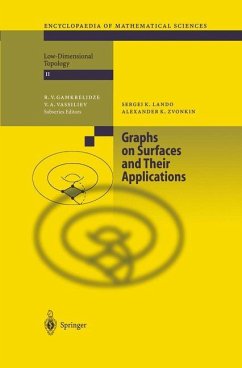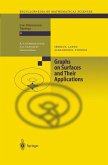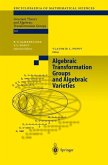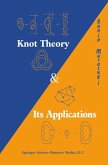Graphs drawn on two-dimensional surfaces have always attracted researchers by their beauty and by the variety of difficult questions to which they give rise. The theory of such embedded graphs, which long seemed rather isolated, has witnessed the appearance of entirely unexpected new applications in recent decades, ranging from Galois theory to quantum gravity models, and has become a kind of a focus of a vast field of research. The book provides an accessible introduction to this new domain, including such topics as coverings of Riemann surfaces, the Galois group action on embedded graphs (Grothendieck's theory of "dessins d'enfants"), the matrix integral method, moduli spaces of curves, the topology of meromorphic functions, and combinatorial aspects of Vassiliev's knot invariants and, in an appendix by Don Zagier, the use of finite group representation theory. The presentation is concrete throughout, with numerous figures, examples (including computer calculations) and exercises, and should appeal to both graduate students and researchers.
Hinweis: Dieser Artikel kann nur an eine deutsche Lieferadresse ausgeliefert werden.
Hinweis: Dieser Artikel kann nur an eine deutsche Lieferadresse ausgeliefert werden.
From the reviews: "The goal of this book is to explain the interrelations between three distinct ways to consider an embedded graph: as a topological object, as a sequence of permutations, as a way of representing a ramified covering of the sphere by a compact two-dimensional manifold. ....... The authors introduce their objects of study, namely graphs and maps, with great care and detail. A wealth of applications is pointed out, but of course these applications are sometimes introduced with minimal or no explanation. The Appendix provides some elegant and concise proofs of results used in the main body of the book and the bibliography contains 313 entries. Well-chosen examples and strategically placed exercises support the reader in gaining an understanding of graphs on surfaces and their fascinating applications." B.Servatius, Zentralblatt für Math. 1040, Issue 9, p. 11, 2004 "This fascinating book is concerned with a modern approach to topological graph theory, with a particular focus on the numerous unexpected applications to, and interrelationships with, other fields of mathematics and also quantum physics, guiding the reader to the cutting edge of current research. ... The book ends with a useful crash course on the representation theory of finite groups and their relevance to the enumeration of constellations, in the form of an appendix written by Don Zagier. The book contains numerous diagrams, examples and exercises, making it appealing to both students and researchers." Mathai Varghese, The Australian Mathematical Gazette, Vol. 31, Number 4, September 2004 "The goal of this book is to explain the interrelations between three distinct ways to consider an embedded graph ... . The authors introduce their objects of study ... with great care and detail. A wealth of applications is pointed out ... . The Appendix provides some elegant and concise proofs of results used in the main body of the book ... . Well-chosen examples and strategically placed exercises support the reader in gaining an understanding of graphs on surfaces and their fascinating applications." (Brigitte Servatius, Zentralblatt MATH, Vol. 1040 (9), 2004) "This fascinating book is concerned with a modern approach to topological graph theory ... guiding the reader to the cutting edge of current research. ... The book ends with a useful crash course on the representation theory of finite groups and their relevance to the enumeration of constellations, in the form of an appendix written by Don Zagier. The book contains numerous diagrams, examples and exercises, making it appealing to both students and researchers." (Mathai Varghese, The Australian Mathematical Society Gazette, Vol. 31 (4), 2004) "The book by Sergei Lando and Alexander Zvonkin is a pleasant new surprise. It brings some fresh air into the subject. ... it shows a great variety of applications, some from the 'mainstream' of mathematics, where embedded graphs can be used, and have been used, to get enhanced results, simplified proofs and deeper understanding. ... I dare to predict that this book will have some serious impact on the future development of topological graph theory." (Bojan Mohar, Combinatorics, Probability and Computing, Vol. 15, 2006) "The nature of this fascinating book is well captured by the story of its origin. Several Russian mathematicians were talking about the topics they had chosen to use with the high school students in their Math Circles. ... The book is charmingly written. ... The overall effect is to draw the reader in and to open up a wide vista of little-known mathematics that is full of surprising ideas, unexpected connections, and just-plain-wonderful theorems. This is a tour worth taking." (Fernando Q. Gouvêa, The Mathematical Association of America, June, 2010)








